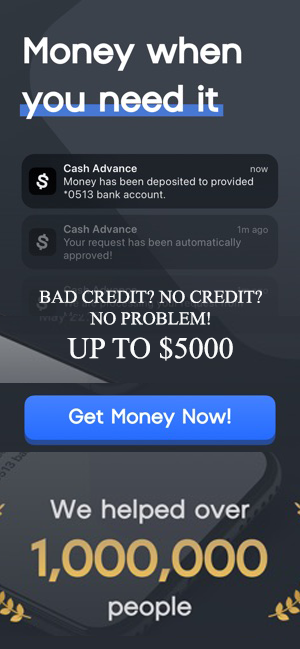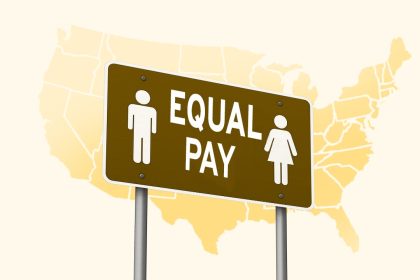Key takeaways
-
Cash back rewards offer a safe and smart way to earn money, with flexible redemption options such as statement credits, discounts or gift cards — but they’re not the same as cash advances.
- Unlike rewards, cash advances come with steep fees and high interest rates, making them a costly way to access cash, so it’s best to avoid them when possible.
- Even ATM withdrawals using your credit card typically count as cash advances, so unless you’re prepared for the extra costs, it’s wiser to stick with cash back rewards instead.
Life is expensive — there’s no denying it. That’s why it feels like a win when you get cash back for using a credit card on purchases you would have made regardless, such as buying gas or dining out.
Cash back credit cards typically offer cash rewards either at a flat rate or in a bonus (or rotating) rewards structure. To earn cash back from a credit card, you simply need to make purchases that qualify for rewards. You’ll automatically earn a percentage back each time you make an eligible purchase with your card, according to the terms of your card.
But are cash back rewards the only way to get cash from a credit card? It depends on a few factors, like the specific card you have and whether you’re willing to pay a higher interest rate for a cash advance.
Before you start swiping, here’s how to understand the difference between cash back and a cash advance, as well as how earning and redeeming cash back work with rewards cards to get the most bang for your buck.
What’s the difference between cash back and a cash advance?
When discussing how to earn cash back by using a credit card, it’s essential to understand the distinction between cash back rewards and cash advances. While cash back rewards are small returns on the money you’ve already spent using your credit card, a cash advance is like a loan against your credit limit, and it comes with hefty fees and high interest from the moment you complete your transaction.
For example, you can take out a cash advance on your credit card by using it to withdraw cash from an ATM. In this case, you’re charged a cash advance fee. You’ll also be subject to a high interest rate that begins to accrue immediately from the day of withdrawal.
A cash advance will likely cost you a lot of money and is rarely a good option. If you need money in case of an emergency, it’s better to dip into your savings or borrow money from a friend or family member before resorting to a cash advance.
Can you get cash back when using a credit card at the grocery store?
No, you generally cannot get cash back — meaning physical money — at a grocery store register with a credit card, unlike with a debit card. However, some Discover cards are an exception, as they do allow cash back at the checkouts of some retailers, including Trader Joe’s, Aldi, ACME supermarkets and others.
When using your Discover card at the checkout, the merchant terminal will prompt you to select the amount of cash you’d like to receive. You can request up to $120 every 24 hours, and there are no transaction fees associated with this service. Keep in mind that this cash withdrawal is still subject to the same purchase APR as your other Discover purchases.
How to get cash from an ATM with your credit card
You can request a cash advance using your credit card at most ATMs. Simply insert your credit card into the ATM as you would with any other card. Enter your PIN, and you should see an option for either a cash withdrawal or a cash advance.
Enter the amount of cash you’d like to withdraw, then review and accept any acknowledgment of the cash advance fees you’re likely to see. After you complete the transaction, you can collect your cash.
Keep in mind:
Cash advances aren’t eligible transactions to earn credit card rewards (including cash back rewards).
Although most credit cards make you redeem your cash back as a statement credit or an account deposit, there’s an exception to the rule. Some Wells Fargo credit cards allow you to redeem your cash back rewards as an ATM withdrawal. In this case, you wouldn’t be taking a cash advance or the downsides that come with it. Instead, you’re just cashing out your rewards.
How to get cash back with a flat-rate rewards structure
Typically, when we refer to cash back, it’s in the context of cash back rewards cards. These cards offer small returns in the form of points or cash back when you use your card for everyday purchases.
Cash back cards are categorized into two types: flat-rate credit cards and bonus (or rotating) category cash back cards. Flat-rate credit cards offer a straightforward approach to earning cash back. With a flat-rate cash back credit card, every purchase earns the same rate of cash back. The best flat-rate cards give cardholders 1.5 percent to 2 percent cash back on all purchases.
For example, the Citi Double Cash® Card provides up to 2 percent cash back on every purchase — 1 percent when you make a purchase and another 1 percent when you pay off your purchases. That means that for every $100 you spend on your card, you earn $2 back.
Flat-rate credit cards appeal to people who prefer predictable rewards and don’t want to juggle credit cards for various spending categories. They’re also useful for purchases that aren’t typically covered by bonus or rotating category cards.
For instance, consider the recurring expenses you have every month, such as utility and internet bills. These categories aren’t typically covered by bonus rewards categories, so a flat-rate credit card could come in handy if you’re looking to get cash back on predictable monthly expenses.
How to get cash back with a bonus or rotating rewards structure
If you choose a credit card with a bonus or rotating cash back structure, you’ll earn more rewards for purchases within common bonus or rotating categories that include groceries, dining, gas or travel. Consider the biggest spending categories in your budget when choosing a bonus or rotating category cash back card.
For cash back credit cards with fixed bonus categories, the categories generally remain the same over time. For cards with rotating bonus categories, categories can change quarterly or monthly. Some bonus cash back cards also offer the flexibility of choosing your own bonus categories or automatically offer bonus cash back on your biggest eligible spending category each month. And then there are cards that offer both fixed and rotating bonus categories.
For example, the Chase Freedom Flex®* offers rotating cash back categories and tiered cash back categories. You’ll earn:
- 5 percent cash back on activated rotating categories each quarter (on up to $1,500 in purchases per quarter, then 1 percent back)
- 5 percent back on Chase TravelSM purchases
- 3 percent back on dining at restaurants and drugstore purchases
- 1 percent cash back on all other purchases
On the other hand, the Citi Custom Cash® Card* offers 5 percent cash back on your top eligible spending category each billing cycle (up to $500 each billing cycle, then 1 percent).
Typically, rotating categories (and some bonus categories) are capped at a specific spending maximum, after which your cash back rate drops to 1 percent. And some cards require quarterly activations in order to earn a boosted rate on new bonus categories. If you don’t activate your bonus categories, you won’t get the boosted rate.
How to get cash back with a welcome bonus
Most cash back credit cards offer lucrative cash back sign-up bonuses, also called welcome bonuses, to new cardholders — something worth paying attention to when choosing a card. To receive a welcome bonus, you’ll typically need to meet a spending requirement within a specified timeframe. Before applying for a card, consider how much you’ll need to spend each month to reach that threshold. If a card requires spending more than you would ordinarily, the sign-up bonus may not be worth it.
Still, you can’t beat money as a welcome gift, and you can often earn a sizable sign-up bonus without spending a lot of money. For example, the Capital One Quicksilver Cash Rewards Credit Card offers new cardholders a $200 cash bonus after spending $500 in the first three months of card membership.
How to redeem cash back rewards
The process of redeeming your rewards depends on the specific terms and conditions of the cash back card you hold. Your card may require you to accrue a minimum amount of cash back rewards before you can redeem them.
Usually, the most common ways to redeem cash back rewards include requesting a statement credit to reduce your current card balance or by having the funds deposited into a linked bank account. You may also be able to request your rewards in the form of a check. Many issuers also allow you to redeem cash back for gift cards, merchandise or shopping with select retailers.
Some cash back cards actually earn points instead of cash back. In such cases, cardholders can often redeem their rewards for travel through their issuer’s travel portal. This can often be one of the most lucrative ways to redeem cash back, as many issuers offer at least 1 cent per point when redeemed this way.
The bottom line
Credit cards are a convenient way to access cash and cash back rewards. However, getting a cash advance shouldn’t be confused with getting cash back. While getting cash from an ATM with your credit card is easy, you’ll want to weigh that ease with the hefty fees and high APRs that apply from the minute you withdraw cash. If you don’t need cash immediately, maximizing cash back rewards is the best way to use your credit card to put money back into your pocket.
Redeeming earned rewards as cash depends on the type of card you’ve earned those rewards with. Flat-rate cards earn the same rewards across all purchases, while rotating rewards cards offer higher rewards on specific categories that can include gas, groceries and travel. You can then redeem those rewards for a range of options that include statement credits, gift cards and bonus checks.
*Information about the Chase Freedom Flex® and Citi Custom Cash® Card has been collected independently by Bankrate. Card details have not been reviewed or approved by the card issuer.
Why we ask for feedback
Your feedback helps us improve our content and services. It takes less than a minute to
complete.
Your responses are anonymous and will only be used for improving our website.
Help us improve our content
Read the full article here
















